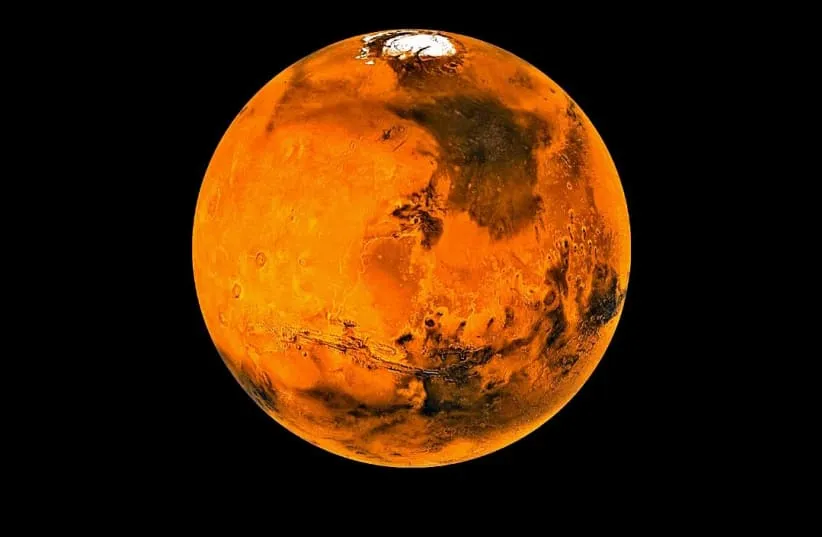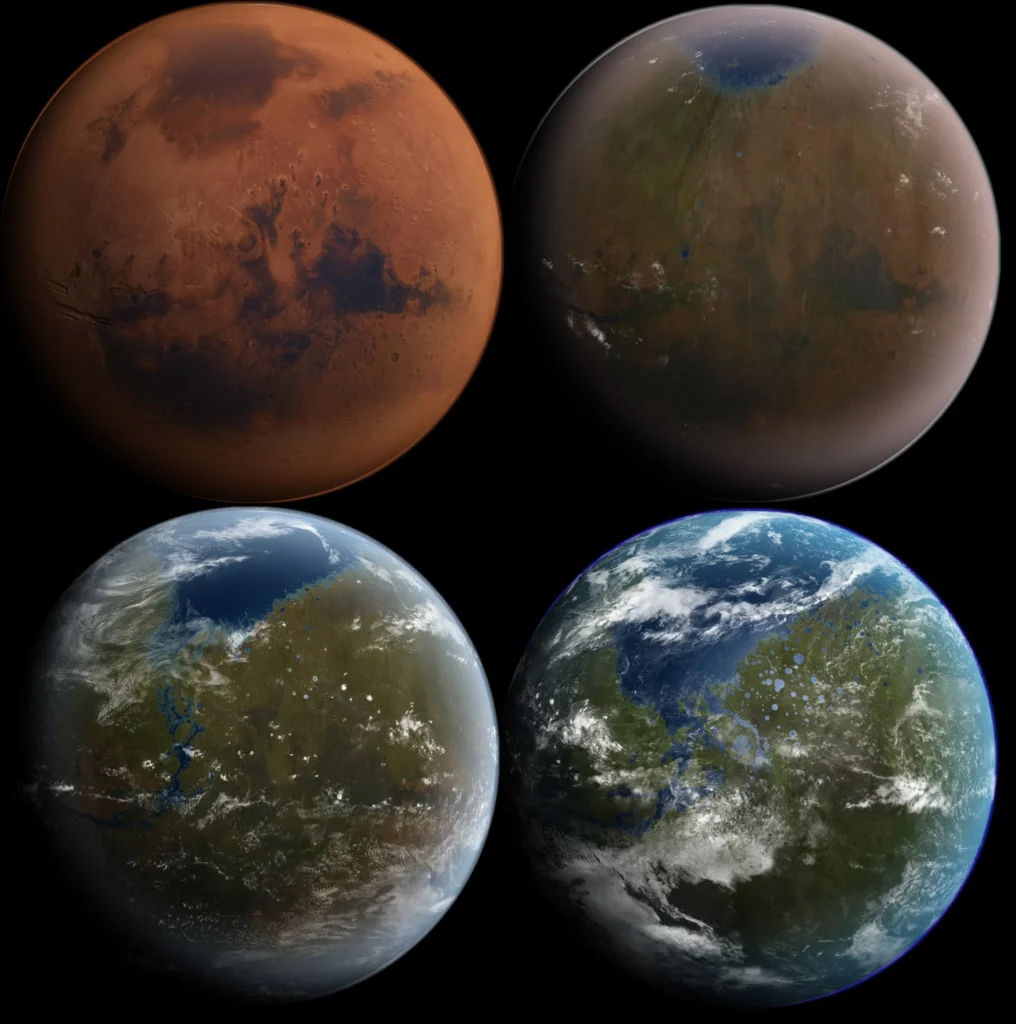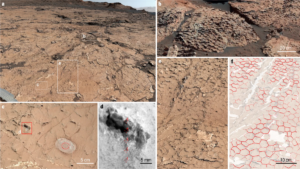Scientists uncover remarkable clues suggesting Mars may have once closely resembled Earth, challenging our understanding of the Red Planet’s history.pen_spark
Introduction-Mars
Recent scientific discoveries have provided compelling evidence that ancient Mars may have had an environment similar to Earth, with conditions that could have been conducive to the emergence of life. These findings come from various studies and observations made by NASA’s Curiosity rover and other missions exploring the Martian surface.

Cyclical Climate Similar to Earth
Research conducted by scientists from CNRS, Université Toulouse III – Paul Sabatier, and Université Claude Bernard Lyon 1, using data from NASA’s Curiosity rover, revealed patterns on Mars that suggest a cyclical climate with wet and dry seasons, akin to those on Earth. This cyclical climate, evidenced by the discovery of hexagonal salt patterns in sedimentary layers, indicates that Mars experienced sustained, regular climate changes over millions of years, which could have supported the formation of complex organic compounds necessary for life.
Evidence of Wet-Dry Cycles
Further supporting the notion of an Earth-like Martian climate, a study published in Nature examined ancient mud cracks found by Curiosity, which were likely formed by high-frequency wet-dry cycles. These cycles are crucial as they facilitate the molecular evolution that could lead to life, suggesting that Mars had an “Earth-like climate regime” favorable to prebiotic evolution.
Manganese Oxide Deposits
Another intriguing discovery involves high concentrations of manganese oxide found in the rocks at Gale Crater, a site believed to have once been a lake. On Earth, manganese oxide forms in the presence of high oxygen levels, typically facilitated by photosynthetic life. The presence of these oxides on Mars raises questions about the Martian atmosphere’s oxygen content and whether conditions might have once supported life.
Ice-Rich Deposits
The Mars Express mission has also contributed to our understanding of Mars’ past environment by identifying ice-rich layered deposits in the Medusae Fossae Formation. These deposits suggest that significant amounts of water were present on Mars, further hinting at habitable conditions in the planet’s history.
Implications for Life
These findings collectively suggest that ancient Mars had a climate and environmental conditions that were remarkably similar to Earth, with the potential for supporting life. The cyclical climate, presence of water, and chemical conditions favorable for the formation of life’s building blocks all point to a Mars that might have been habitable billions of years ago. This not only deepens our understanding of Mars’ geological and climatic history but also expands the scope of our search for life beyond Earth.

What is the significance of the discovery of wet-dry cycles on mars?
The discovery of wet-dry cycles on Mars is significant for several reasons, primarily because it suggests that ancient Mars had environmental conditions that could have been conducive to the emergence of life. This finding is based on the analysis of patterns observed by NASA’s Curiosity rover, which indicate that Mars experienced cyclical climate changes, similar to the wet and dry seasons on Earth. Here are the key points highlighting the significance of this discovery:
- Evidence of a Cyclical Climate: The presence of hexagonal patterns in sedimentary layers, observed by the Curiosity rover, provides the first tangible proof that Mars had a wet-dry climate, similar to Earth. This cyclical climate, with both wet and dry seasons, could have provided the right conditions for life to form on Mars.
- Promotion of Prebiotic Chemistry: Wet-dry cycling is known to promote prebiotic polymerization, the process by which simple organic molecules form more complex structures. This means that the Gale evaporitic basin, where these patterns were observed, may have been particularly conducive to the processes necessary for the emergence of life.
- Seasonal or Short-Term Flooding: Observations of mud cracks by Curiosity suggest that high-frequency wet-dry cycling occurred, which could mean that Mars once had an Earth-like wet climate with seasonal or short-term flooding. This environment is ideal for the formation of polymeric molecules required for life, as wet periods bring molecules together while dry periods drive reactions to form polymers.
- Preservation of Geological Record: Mars’ lack of plate tectonics has preserved vast areas of terrain with fossil rivers and lakes dating back billions of years. This geological record provides a unique opportunity to study the conditions that may have been favorable for the emergence of life, offering insights that are no longer available on Earth due to its constantly renewing surface.
- Potential for Life: The discovery of wet-dry cycles on Mars raises the possibility that the planet may have once supported life. The cyclical climate, combined with the presence of simple organic molecules detected by Curiosity, suggests that Mars had the environmental conditions necessary for the spontaneous organization of these molecules into complex organic compounds.
In summary, the discovery of wet-dry cycles on Mars is a groundbreaking finding that not only enhances our understanding of the planet’s climate and geological history but also opens up new avenues for research into the origin of life. It suggests that ancient Mars had a climate regime similar to Earth’s, with conditions that may have been favorable for the development of life. This discovery is a significant step forward in our quest to understand whether life ever existed on Mars and, more broadly, the conditions necessary for life to emerge in the universe.
Conclusion:
The recent scientific findings from Mars, including evidence of cyclical climates, wet-dry cycles, manganese oxide deposits, and ice-rich layers, strongly suggest that ancient Mars may have had environmental conditions similar to Earth. These conditions could have supported the formation of complex organic compounds and potentially life.
This evidence, gathered from various Mars missions, indicates that Mars once had a climate regime and atmospheric characteristics conducive to life, making it a prime candidate for further exploration in the search for extraterrestrial life. These discoveries not only enhance our understanding of Mars’ past but also significantly influence the ongoing search for life in the universe.
